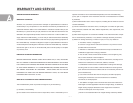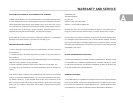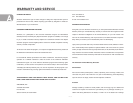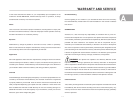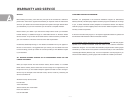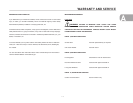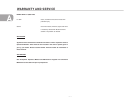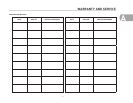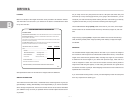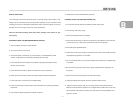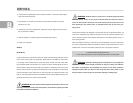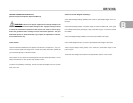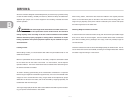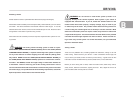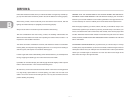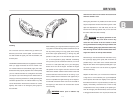
B
DRIVING
B - 1
LOADING
Below is a sample of the weight information chart provided in all Airstream vehicles.
This information can be found in your vehicle on the back of a wardrobe door about
60” up from the floor.
See specification section in this manual for weights and term definitions.
WEIGHT DISTRIBUTION
The motorhomes have fresh water, a wastewater tank, and storage areas. It gives you
great flexibility in loading. With flexibility comes responsibility. If you want to load down
all the storage compartments, the amount of fluids will have to be reduced. Distribute
your additional cargo as evenly as possible with the heaviest objects located as low
as possible.
Do you really want to carry 300 pounds of water to a RV park 1,000 miles away and
then hook up to a city water supply? Even if you’re going to the “boondocks”, you can
usually fill your water tank shortly before entering the area. Just reducing your load by
10 gallons of water lets you carry an awful lot of fishing and camping gear.
The Unloaded Vehicle Weight
(UVW), listed on the chart in your coach, is the weight
of this motorhome as manufactured at the factory with full fuel, engine oil, and cool-
ants.
Cargo Carrying Capacity (CCC) is equal to the GVWR minus each of the following:
UVW, full fresh (potable) water weight (including water heater), full propane weight,
and SCWR.
WEIGHING
The unloaded vehicle weight (UVW), listed on the chart in your coach is the weight of
the motorhome with the options as ordered and installed at the factory. It includes all
weight at the axles with full generator fluids, including fuel, engine oil, and coolants.
To determine the actual weight of your vehicle with personal cargo, water and LP, it
must be weighed on scales. The most common scales are those used by states to
weigh trucks used along the highway. In rural areas, grain elevators are a good source
and another would be a gravel pit. Note: Weighing instructions for this motorhome are
explained later in this section.
If you have trouble locating scales, a call to your State Highway Patrol will usually find
them very cooperative in assisting you.
MOTORHOME WEIGHT INFORMATION
VIN OR SERIAL NUMBER
GVWR (GROSS VEHICULAR WEIGHT RATING) IS THE MAXIMUM PERMISSABLE WEIGHT OF THIS FULLY LOADED MOTORHOME.
UVW (UNLOADED VEHICLE WEIGHT
), IS THE WEIGHT OF THE MOTORHOME AS MANUFACTURED AT THE FACTORY WITH
FULL FUEL, ENGINE OIL, AND COOLANTS
.
CCC (CARGO CARRYING CAPACITY) IS EQUA
L TO GVWR MINUS EACH OF THE FOLLOWING: UVW, FULL FRESH (POTABLE)
WATER WEIGHT, (INCLUDING WATER HEATER) FULL LP GAS WEIGHT AND SCREW.
CARGO CARRYING CAPACITY (CCC) COMPUTATION
POUNDS KILOGRAMS
GVWR....................................................................................................................................
MINUS UVW..................................................................................................................
MINUS FRESH WAT
ER WEIGHT OF GALLONS @ 8.3 LB/GAL..................
MINUS LP GAS WEIGHT OF GALLONS @ 4.2 LB/GAL...................
*CCC FOR THIS MOT
ORHOME........................................................................................
*DEALER INSTALLED EQUIPMEN
T WILL REDUCE CCC
CONSULT OWNER MANUAL (S) FOR SPECIFIC WEIGHING INSTRUCTIONS AND TOWING GUIDELINES.
CD-133
SCWR (SLEEPING CAPACITY WEIGHT RATING) IS THE MANUFA
CTURER’S DESIGNATED NUMBER OF SLEEPING POSITIONS
MULTIPLIED BY 154 POUNDS (70 KILOGRAMS)
MINUS SCWR OF PERSONS @154LB/PERSON....................



